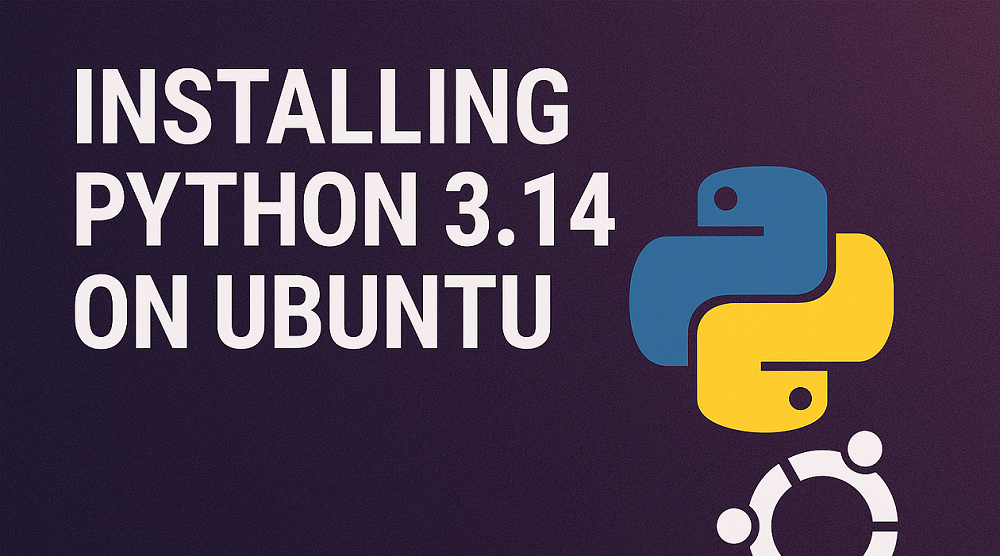Python’s venv module is used for creating virtual environments. It helps us to create and manage isolated environments for Python applications with different versions of Python. These are lightweight environment that has their own independent set of Python packages in their site directories.
The Python virtual environment is used to isolate your project’s dependencies and avoid conflicts between projects. If you are a Python developer, DevOps, or a Linux System administrator, you would have worked on Python virtual environment at some point in time.
In this blog post, we will walk you through the steps necessary to create a virtual environment for Python development on Ubuntu and Debian Linux systems.
Prerequsities
This article assumes, that you already have Python installed on your Ubuntu, Debian, or Linux Mint systems.
Step 1 – Install venv
First of all, you need to install the Python module for the virtual environment on your system. Python3 users can directly install the package for the env. The Python 2.7 users need to install virtualenv Python module. This will also install other required modules on your system.
- For Python3:
sudo apt install python3-venv - For Python 2.7:
sudo pip2 install virtualenv
Step 2 – Create Python Virtual Environment
Once the installation is finished. Let’s create an isolated Python environment for your application.
-
Locate the python binary files location on your system. I have just installed Python 3.10 and Python 2.7 on our Debian system. In my case both binary files are located at
- Now, Create a separate environment for your Python Application. We are using venv as the environment directory name, but you can use any other name of your choice. You can also define the environment directory in a different location.
First, navigate your Python project directory.
cd myPythonApp - Then create Python isolated environment based on the Python version requirements.
- For Python 3:
/usr/bin/python3.10 -m venv venv - For Python 2.7:
virtualenv -p /usr/bin/python2.7 venv
- For Python 3:
/usr/bin/python3.10 and /usr/bin/python2.7.which python2.7#Output: /usr/bin/python2.7
which python3.10#Output: /usr/bin/python3.10
You can choose any other Python version as per the application requirements.
The above commands create a directory named venv in the current directory with a local copy of files. While working on this website, you should activate the local environment in order to make sure you’re working with the right versions of your tools and packages.
Step 3 – Activate Python Virtual Environment
To work with a Python virtual environment, you need to activate the environment. After that, you can install a required module for your Python project as well as run your Python application in an isolated environment.
Use the following command to activate the Python environment:
source venv/bin/activate
Any package that you install using pip is now placed in the virtual environments project folder, isolated from the global Python installation.
Use pip3 to install a module. To install the most commonly used ‘requests’ module, type:
pip3 install requests
OutputCollecting requests Downloading requests-2.26.0-py2.py3-none-any.whl (62 kB) |████████████████████████████████| 62 kB 1.8 MB/s Collecting idna<4,>=2.5 Downloading idna-3.2-py3-none-any.whl (59 kB) |████████████████████████████████| 59 kB 12.0 MB/s Collecting urllib3<1.27,>=1.21.1 Downloading urllib3-1.26.7-py2.py3-none-any.whl (138 kB) |████████████████████████████████| 138 kB 35.3 MB/s Collecting charset-normalizer~=2.0.0 Downloading charset_normalizer-2.0.6-py3-none-any.whl (37 kB) Collecting certifi>=2017.4.17 Downloading certifi-2021.5.30-py2.py3-none-any.whl (145 kB) |████████████████████████████████| 145 kB 36.4 MB/s Installing collected packages: urllib3, idna, charset-normalizer, certifi, requests Successfully installed certifi-2021.5.30 charset-normalizer-2.0.6 idna-3.2 requests-2.26.0 urllib3-1.26.7
All the installed modules files are placed at venv/lib/python3.10/site-packages directory.
Step 4 – Deactivate Python Virtual Environment
After finishing your work inside the virtual environment, just type the “deactivate” command to exit from the isolated environment prompt.
deactivate
You will get the default system prompt.
Step 5 – Deleting the Python Virtual Environment
To Delete the Python virtual environment from your application. Simply delete the venv directory from your application folder.
rm -rf venv
Conclusion
In this tutorial, you have learned to create Python virtual environment on Ubuntu, Debian, and other Debian derivative Linux systems. The Python virtual environment helps us to deploy multiple Python applications on a single server without making conflicts for modules between each other.


2 Comments
thank you very much, sir
The official recommendation is to use venv instead of virtualenv. What do you think about?